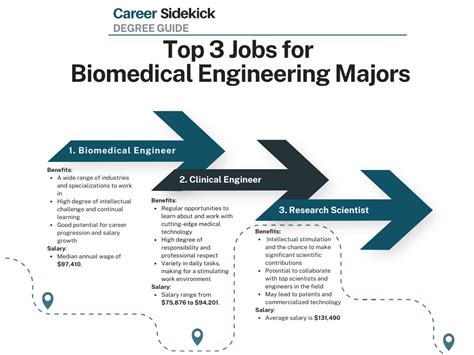Introduction
Biomedical engineering is an interdisciplinary field that combines engineering principles with biological sciences to solve medical problems. Texas A&M University offers a highly regarded biomedical engineering degree program that provides students with the knowledge and skills necessary to succeed in this rapidly growing field.

Degree Plan Overview
The biomedical engineering degree plan at Texas A&M University is a four-year, 128-credit hour program that includes coursework in engineering, biology, chemistry, and mathematics. Students begin by taking foundational courses in these areas before progressing to more specialized coursework in biomedical engineering.
Core Courses
The core courses in the biomedical engineering degree plan include:
- Engineering: Engineering Mechanics, Thermodynamics, Fluid Mechanics, Electrical Engineering, Computer Science
- Biology: General Biology, Cell Biology, Biochemistry
- Chemistry: General Chemistry, Organic Chemistry
- Mathematics: Calculus, Linear Algebra, Differential Equations
Specialization Tracks
In their junior and senior years, students can choose to specialize in one of three tracks:
- Biomaterials and Tissue Engineering: Focuses on the development and application of biomaterials for medical devices and tissue regeneration.
- Biomedical Devices and Instrumentation: Emphasizes the design, development, and testing of medical devices and instrumentation.
- Cellular and Molecular Bioengineering: Explores the application of engineering principles to understand and manipulate cells and molecules for medical applications.
Laboratory Experience
Laboratory experience is an integral part of the biomedical engineering degree plan. Students participate in laboratory courses throughout their program, gaining hands-on experience with biomedical equipment and techniques.
Design Projects
Students also complete a series of design projects throughout their program. These projects allow them to apply their knowledge and skills to real-world biomedical engineering problems.
Career Opportunities
Graduates of the biomedical engineering degree plan at Texas A&M University are well-prepared for careers in a wide range of industries, including:
- Medical device manufacturing
- Biotechnology
- Pharmaceuticals
- Healthcare
- Government
- Research
Salaries and Employment Outlook
According to the U.S. Bureau of Labor Statistics, the median annual salary for biomedical engineers was $97,410 in May 2021. The job outlook for biomedical engineers is expected to grow 5% from 2021 to 2031, faster than the average for all occupations.
Why Biomedical Engineering Matters
Biomedical engineering has played a crucial role in advancing medical technology and improving patient care. Some examples include:
- Development of artificial organs and tissues: Biomedical engineers have developed artificial organs, such as pacemakers and kidney dialysis machines, that have saved countless lives.
- Medical imaging techniques: Biomedical engineers have developed medical imaging techniques, such as MRI and ultrasound, that allow doctors to diagnose and treat diseases more accurately.
- Biomaterials for tissue regeneration: Biomedical engineers are developing biomaterials that can be used to repair damaged tissue and restore function.
Benefits of Pursuing a Biomedical Engineering Degree
There are many benefits to pursuing a biomedical engineering degree, including:
- High earning potential: Biomedical engineers earn a competitive salary.
- Job security: The job outlook for biomedical engineers is expected to grow in the coming years.
- Meaningful work: Biomedical engineers have the opportunity to make a real difference in the lives of others.
- Intellectual challenge: Biomedical engineering is a challenging field that requires students to be creative and innovative.
Tips and Tricks
Here are a few tips for success in the biomedical engineering degree program at Texas A&M University:
- Get involved in research: Research experience is highly valued by employers.
- Join student organizations: Student organizations provide opportunities to network with other students and learn about the field.
- Attend industry events: Industry events are a great way to learn about new technologies and meet potential employers.
- Stay up-to-date on the latest advancements in biomedical engineering: The field of biomedical engineering is constantly evolving. It is important to stay up-to-date on the latest advancements.
Comparison of A&M’s Biomedical Engineering Degree Plan with Other Universities
| University | Program Length | Credit Hours | Specialization Tracks | Cost |
|---|---|---|---|---|
| Texas A&M University | 4 years | 128 | Biomaterials and Tissue Engineering, Biomedical Devices and Instrumentation, Cellular and Molecular Bioengineering | $30,000-$50,000 (in-state) |
| Duke University | 4 years | 129 | Biomaterials and Tissue Engineering, Biomedical Devices and Instrumentation, Computational Bioengineering | $60,000-$80,000 (out-of-state) |
| Stanford University | 4 years | 120 | Bioengineering, Computational Bioengineering, Medical Device Design | $60,000-$80,000 (out-of-state) |
| MIT | 4 years | 128 | Bioengineering, Chemical-Biological Engineering, Electrical Engineering and Computer Science | $70,000-$90,000 (out-of-state) |
Pros and Cons of Pursuing a Biomedical Engineering Degree
Pros:
- High earning potential: Biomedical engineers earn a competitive salary.
- Job security: The job outlook for biomedical engineers is expected to grow in the coming years.
- Meaningful work: Biomedical engineers have the opportunity to make a real difference in the lives of others.
- Intellectual challenge: Biomedical engineering is a challenging field that requires students to be creative and innovative.
Cons:
- Difficult coursework: Biomedical engineering coursework can be challenging, especially for students who are not strong in math and science.
- Long hours: Biomedical engineers often work long hours, especially during project deadlines.
- Stressful environment: The biomedical engineering field can be stressful, especially when working on projects with high stakes.
Conclusion
The biomedical engineering degree plan at Texas A&M University is a rigorous and challenging program that prepares students for successful careers in the field. Graduates of the program are well-equipped with the knowledge and skills necessary to make a difference in the world through the application of engineering principles to medical problems.
